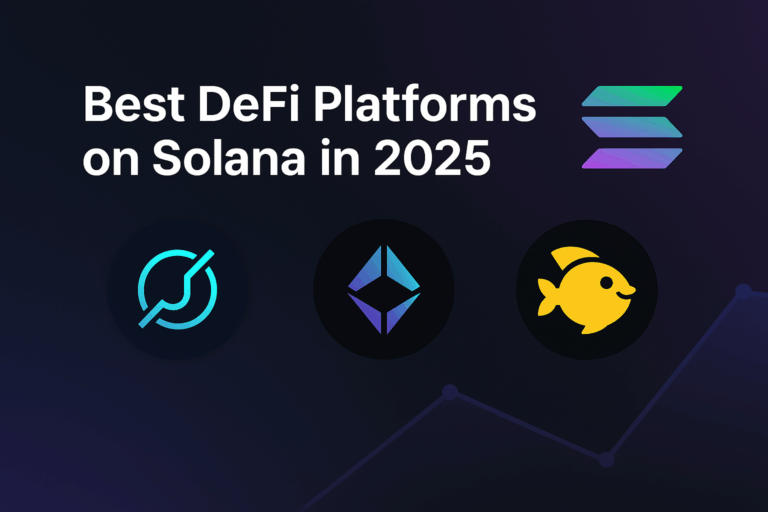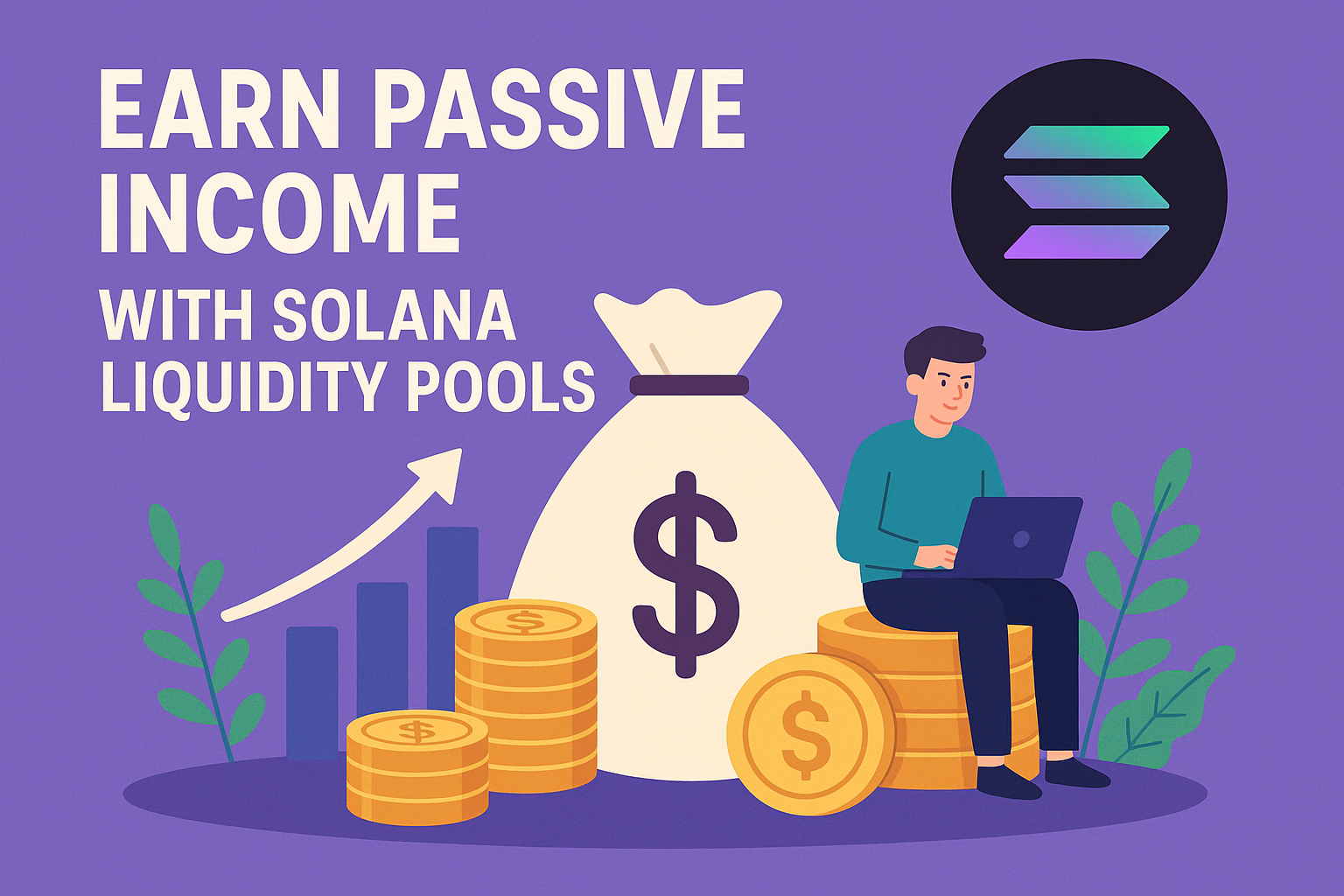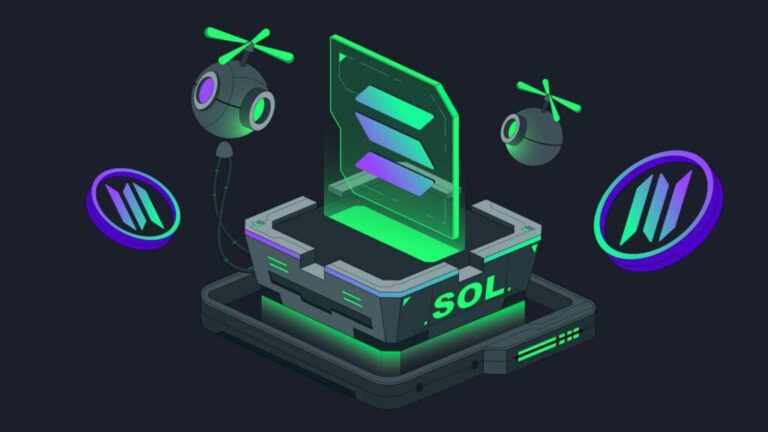Lending and Borrowing on Solana: Step-by-Step
Decentralized finance (DeFi) has opened new doors for investors, traders, and crypto enthusiasts. One of the fastest-growing ecosystems is Solana, known for its speed, scalability, and low transaction fees. Among its many applications, lending and borrowing crypto on Solana has become a powerful tool for maximizing capital efficiency. In this guide, we’ll take you through everything you need to know—step-by-step.
Table of Contents
Why Choose Solana for Lending and Borrowing?
Before diving into the process, it’s important to understand why Solana stands out in the DeFi space:
- High speed: Solana processes up to 65,000 transactions per second.
- Low fees: Transaction costs are typically less than a fraction of a cent.
- Growing ecosystem: With platforms like Solend, Jet Protocol, and Mango Markets, Solana offers multiple DeFi lending options.
- Accessibility: Anyone with a wallet can participate—no banks or intermediaries required.
Understanding Lending and Borrowing in DeFi
What is Lending?
Lending in DeFi means depositing your tokens into a liquidity pool. Other users can borrow those tokens by paying interest, and as a lender, you earn yields on your deposits.
What is Borrowing?
Borrowing allows you to access liquidity by using your crypto as collateral. For example, you might deposit SOL tokens and borrow USDC against it to use for trading or other opportunities.
Popular Solana Lending Platforms
Here are some of the leading platforms for lending and borrowing on Solana:
| Platform | Main Features | Website |
|---|---|---|
| Solend | Largest lending platform on Solana, multiple assets supported, user-friendly interface. | solend.fi |
| Jet Protocol | Decentralized borrowing and lending protocol focused on governance and risk management. | jetprotocol.io |
| Mango Markets | Combines spot trading, lending, and borrowing in one platform. | mango.markets |
Step-by-Step Guide: Lending and Borrowing on Solana
Step 1: Set Up a Solana Wallet
You’ll need a compatible wallet to interact with Solana dApps. Popular options include:
- Phantom Wallet
- Solflare
- Sollet
Download your chosen wallet, create a secure seed phrase backup, and fund it with SOL for transaction fees.
Step 2: Connect to a DeFi Platform
Visit a platform like Solend and click “Connect Wallet.” Approve the connection in your wallet extension.
Step 3: Deposit Assets for Lending
Choose the token you want to lend (e.g., SOL, USDC, or SRM). Enter the amount and confirm the transaction. Once deposited, your assets start earning interest automatically.
Step 4: Borrow Against Collateral
If you want to borrow:
- Deposit collateral tokens into the platform.
- Check the borrowing power percentage (usually 70-80% of your collateral’s value).
- Select the token you want to borrow (e.g., USDC or USDT).
- Confirm the transaction and receive the borrowed tokens in your wallet.
Step 5: Monitor Health Factor
Every lending platform uses a health factor to measure your collateral risk. If the value of your collateral drops below a threshold, your assets may be liquidated. Regularly monitor your account to avoid liquidation.
Step 6: Repay Borrowed Assets
To close your loan, simply repay the borrowed tokens plus accrued interest. After repayment, you can withdraw your collateral.
Strategies for Maximizing Returns
Yield Farming with Borrowed Assets
Some users borrow stablecoins and deposit them into yield farming protocols to earn higher returns. This strategy carries risks but can amplify earnings.
Hedging Volatility
Borrowing stablecoins against volatile assets like SOL allows you to access liquidity without selling your long-term holdings.
Leverage Trading
Advanced users borrow to increase position sizes. While profitable in bull markets, this carries high liquidation risk.
Risks of Lending and Borrowing on Solana
While DeFi offers great opportunities, it also comes with risks:
- Smart contract risk: Vulnerabilities in code may lead to exploits.
- Liquidation risk: Falling collateral prices can trigger forced liquidation.
- Market volatility: Prices can swing quickly, impacting both lenders and borrowers.
- Platform risk: New projects may lack stability or sufficient liquidity.
Frequently Asked Questions
Is it safe to lend on Solana?
While Solana is fast and efficient, safety depends on the platform’s smart contract security and your risk management. Always use reputable platforms and diversify deposits.
What tokens can I lend or borrow?
Common options include SOL, USDC, USDT, SRM, and ETH-wrapped tokens. Availability varies by platform.
How much can I borrow?
Typically, you can borrow up to 70-80% of your collateral’s value. However, borrowing too close to the limit increases liquidation risk.
Can I earn passive income by lending?
Yes. Lending crypto is one of the most popular ways to earn passive income in DeFi, especially when using stablecoins with lower volatility.
Best Practices for Lending and Borrowing on Solana
- Start small and test the platform before committing large amounts.
- Keep an eye on your health factor and avoid over-leveraging.
- Diversify across different assets and platforms.
- Stay updated on Solana DeFi news through sources like Cointelegraph or DeFi Llama.
Conclusion: Unlocking DeFi Potential on Solana
Lending and borrowing on Solana offers fast, affordable, and accessible financial tools that rival traditional banking systems. Whether you want to earn passive income by lending or access liquidity without selling your assets, Solana’s DeFi ecosystem provides powerful solutions. However, success requires careful risk management, ongoing monitoring, and smart strategy selection.
Ready to take advantage of Solana DeFi? Start small, explore platforms like Solend and Jet Protocol, and build your strategy step-by-step. The future of finance is decentralized—don’t miss your chance to participate.



Comments